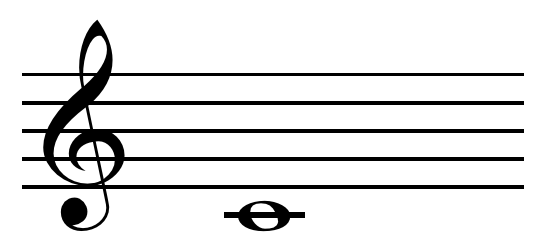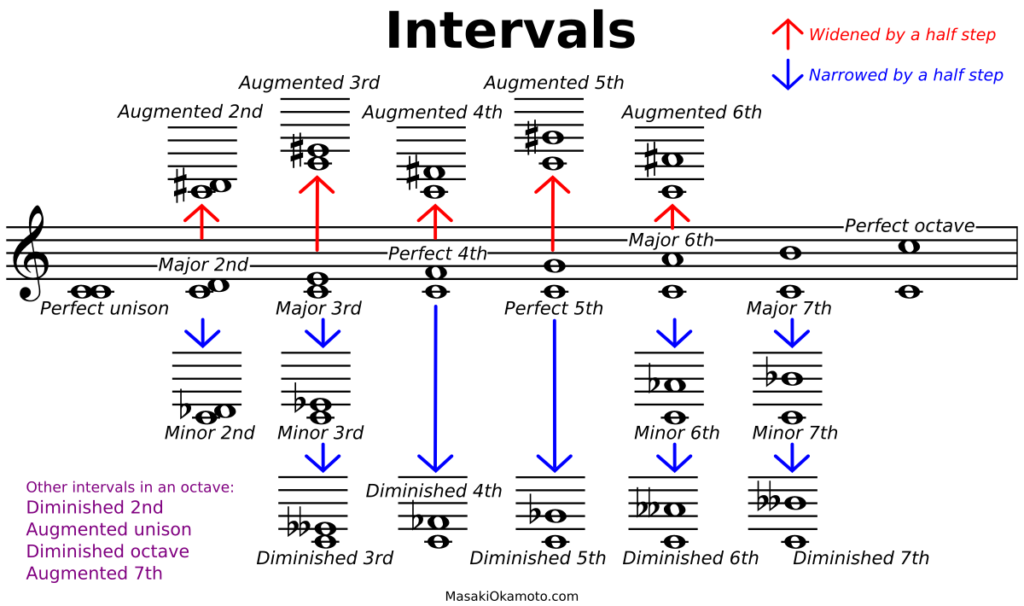Music Theory Basics: Insanely Easy Guide ALL Musicians Should Learn

*This article may contain links to affiliate products & services. We have reviewed these services to try and ensure the highest quality recommendations*
Written by Jaron Lewis
Whether you attend music lessons or you are self-taught, there are certain things that every musician should learn. The best way to learn music theory is to regularly work on music theory exercises. A bit like keeping your brain sharp by doing crossword puzzles. Even basic music theory guitar can make a difference to your playing.
If you’ve ever thought that music theory didn’t make much sense, it’s probably because everyone seems to use a different system. Think of music as a language, it is made up of parts and those parts have smaller parts. Much like a sentence is made up of words, which are made up of letters. To understand how to make a whole sentence, you must first learn the alphabet and how to put those letters into words. That’s exactly how music works.
Learning and understanding basic music theory is necessary to effectively communicating with fellow musicians. That goes for jamming, playing on a stage, or writing a song- you need to know how to talk about what you’re doing. Luckily, it’s pretty easy.
1. Alphabet
It’s a lot like the English alphabet, it’s just a system of letters that have been assigned to the sound of music, which we call notes. This is the easiest part to learn and everything else is based on it.

2. Scales
Scales are a linear arrangement of notes, so if notes are pitches then scales are pitches in a particular order. It can be the most boring aspect to learn and practice, but they are vital to basic music theory. That’s because scales, or pieces of scales, are put into use in pretty much every song that has ever been written.
3. Intervals
It’s the distance from a note to another note. That is whether it’s A to B (a second), or G# to Eb (which is a sixth), each interval has its own name. It’s useful when figuring out harmonies.

4. Chords
Simply, three members of the scale that are combined into one sound. Such as when C, E, and G are combined they equal CMaj, while D, F, and A equal DMin. Chords provide structure, shape and organization to a song. They make the song sound a particular way. It’s really important to know and understand these. For instance, minor chords are generally used to convey sadness.
These tell us about the tonality, or key, of a song. It tells us which notes will be used in the song. The more you work with key signatures, the most familiar you will become with the range and scale of keys. You don’t want all your songs to sound the same, so it’s vital that you study and learn these.
Music theory might sound complicated, but as you can see from the points above each area plays its part in the bigger picture and once you get into it, it isn’t all that difficult.
When your song is ready to go, it's time to start promoting it to potential fans! Omari has the best organic promotion services money can buy. With packages for Spotify, TikTok, Instagram, and YouTube, we will get your music the traffic and attention it deserves! Click below for more information.
SPEAK YOUR MIND
How This INDIE Artist Got Over 67,598,275 Streams On ONE Song
Join the No-Nonsense Music Marketing Newsletter to get the most valuable weekly case studies and strategies to grow your music business!



